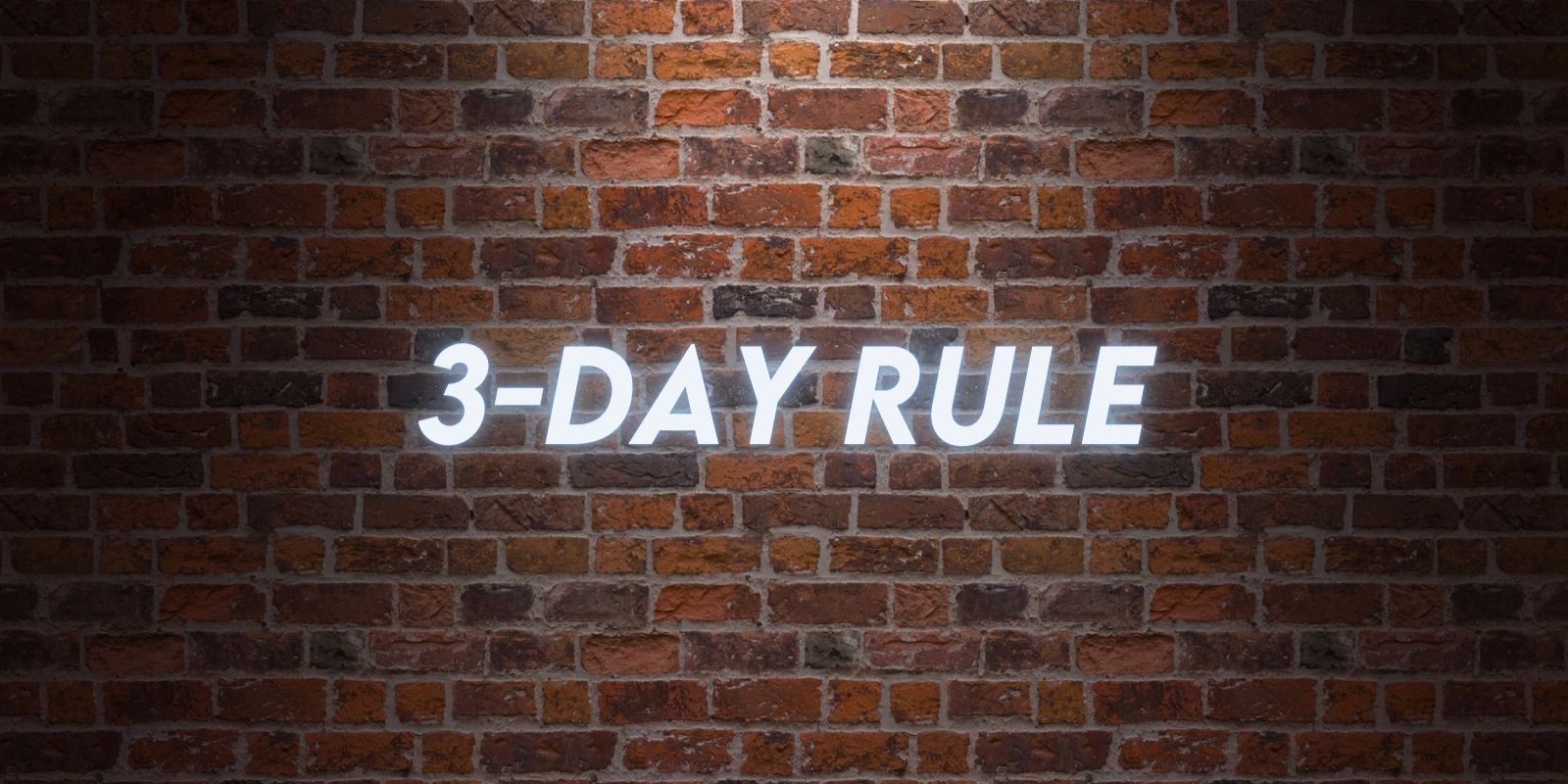While a mortgage produces a mountain of paperwork, one document stands out as the most important to thoroughly review and understand before you sign on the dotted line: the Closing Disclosure form.
While it’s designed to be a simple, straightforward summary of each fee and term associated with your mortgage, many homebuyers find reviewing the Closing Disclosure to be daunting, confusing, and overwhelming.
In this article, we’ll explain why the Closing Disclosure is so critical.
We’ll also break it down line by line and explain each section of the document, as well as what to do if you find a problem or error on your Closing Disclosure.

What is a Closing Disclosure Form?
The Closing Disclosure document is a five-page, detailed summary of the terms, interest rate, monthly payment amount, and closing costs of your loan.
By law, your lender must give you this form at least three days prior to closing so you can review each item.
It’s kind of like a final check in the home buying process.
The Closing Disclosure can be overwhelming, especially if you don’t know what to look out for.
This article will provide you with the knowledge and understanding to confidently review and interpret your Closing Disclosure.

Why is the Closing Disclosure Form Important?
Mortgage loans involve a lot of money, so it’s imperative that you understand the terms of your loan before you sign on the dotted line.
During pre-qualification or pre-approval, the bank gave you an estimated interest rate, payment amount, and closing cost total.
On a Closing Disclosure form, the numbers are real.
The Closing Disclosure document is the final green light before closing.
Compare the numbers on the document to the ones you received in your original loan estimate.
After you sign the document, you are clear to close on the loan.

What is a Closing Disclosure “3-Day Rule?”
This rule places a mandatory three-business-day waiting period between the time you sign the Closing Disclosure and the closing date on your loan.
The waiting period gives you ample time to compare the Closing Disclosure with your original Loan Estimate to make sure you understand all the terms and conditions and there are no mistakes in the final paperwork.
This requirement comes from the TILA-RESPA Integrated Disclosures guidelines (or TRID), which went into effect on October 3, 2015.
Before these rules, lenders used Good Faith Estimate and HUD-1 forms which, while somewhat standardized, varied in the language used from lender to lender.
Many buyers who were not well-versed in the mortgage underwriting process had a hard time understanding and accurately comparing the details of their loans.
HUD-1 was provided to borrowers on closing day, which didn’t give enough time to scrutinize any variances between what was promised and the final loan terms.
Some dodgy lenders would even play bait-and-switch, offering their customers a great deal on a loan, only to change up the terms or fees at the closing table.
Thanks to TRID, the format of the Closing Disclosure form is nearly identical to the Loan Estimate, making apples-to-apples comparisons quick and easy for borrowers.
It also gives them three business days to review the forms and ensure that all final details are correct.
The three-day rule makes the sequence of events leading up to receiving a Closing Disclosure relatively predictable.
Here’s a breakdown of the process:
- All loan costs are calculated.
- The Closing Disclosure form is issued.
- The Three-Day Rule goes into effect. (Only business days count.)
- You review the Closing Disclosure and check for errors/mistakes.
- You sign the Closing Disclosure form.
- You close on the loan at least three business days after signing the form.
If, during this process, you find discrepancies or errors in the Closing Disclosure, they can be easily corrected.
However, three major adjustments will trigger a new, corrected Closing Disclosure:
- A change in your loan’s annual percentage rate (APR)
- A prepayment penalty is added
- A change in loan product (such as switching from an adjustable interest rate to a fixed one)
In each of these cases, a new Closing disclosure must be issued and the three-day waiting period starts over.
The three-day waiting period is pretty hard and fast, but you can waive the waiting period if you have a personal financial emergency.
In this case, you must sign the Closing Disclosure and give the lender a signed letter stating the personal financial emergency and requesting that the lender waive the three-day waiting period.

What’s in the Closing Disclosure?
We’ve broken down each component of the Closing Disclosure form to make it easy for you to review your Closing Disclosure and check for mistakes or errors.
Loan Terms
This section is an accurate snapshot of how much you’ll pay on your loan and for how long.
Here are the five elements it contains:
- Loan Amount: The total amount of the mortgage you’re borrowing. This is the purchase price minus your down payment.
- Interest Rate: What percentage of the loan total will accrue each year and be added to your unpaid principal.
- Monthly Principal & Interest: The amount of your monthly payment that goes toward the base amount of your loan (principal) and the interest that has accrued. This does NOT include taxes or insurance.
- Prepayment Penalty: Lenders must disclose if there is a fee for paying off your loan early.
- Balloon Payment: Some loans require a one-time, extra-large payment at the end of the loan, which must be disclosed here.
Projected Monthly Mortgage Payment Breakdown
This section provides a picture of what you owe on a month-to-month and year-to-year basis.
- Payment Calculation: This section itemizes how the lender arrives at the amount you must pay each month. It includes principal and interest on the mortgage, the price of your homeowner’s insurance, and any amount that goes into escrow for taxes.
- Estimated Total Monthly Payment: This line item adds up all of the previous elements and tells how much will come out of your pocket each month to pay for your mortgage.
- Estimated Taxes, Insurance & Assessments: This part states whether the monthly payment includes escrow for property taxes, homeowner’s insurance, and HOA fees. It also gives an estimate for each one, noting that any of these costs may rise in the future.
Closing Costs
Closing costs will typically be around 2% – 5% of your loan amount.
This section itemizes each charge and gives you the grand total of how much it will cost to take out the loan, as well as how much cash you need to bring to the closing table.
Understanding these costs will help ensure you stay within your home buying budget.
Loan Costs
A surprising number of professionals have their hands in the pot on any given mortgage, and each one has to get paid.
The following is a breakdown of what fee covers what service for your loan.
- Origination Fee: This is the cost of administering your loan. It’s usually about 1% of your loan amount.
- Mortgage Points: If you buy points to reduce the interest on your loan, they’ll show up here. A point is 1% of your total loan amount.
- Application Fee: This covers the cost of processing your mortgage application.
- Underwriting Fee: This charge pays the lender to analyze your full financial picture and assess whether to approve you for a loan and at what interest rate.
- Services Borrower Did Not Shop For: These are payments to professionals that the lender partners with that you don’t get to choose. They can include things like appraisal fees, flood determination fees, credit reporting fees, and more.
- Services Borrower Did Shop For: You can shop around for items on this list, such as a title company, survey fees, or pest/lead inspection.
Other Costs
This section covers all the miscellaneous items that don’t fit neatly into the above categories, many of which involve payments you’ll need to make at closing.
- Taxes & Government Fees: These include transfer taxes and deed recording fees with the county.
- Prepaids: Certain items must be paid upfront, which can include mortgage insurance (if you’re putting less than 20 percent down), property taxes, homeowner’s insurance, or annual HOA fees.
- Initial Escrow Payment at Closing: The costs in this section make sure you have enough in escrow to cover taxes and insurance (homeowner’s and mortgage), especially since you may not have your first mortgage payment for up to two months after your closing date.
- Other: This is the catch-all miscellaneous section for items like home warranty fees, inspection fees, real estate commissions, title insurance, and so on.
Cash-To-Close Table
It would be supremely embarrassing to show up to the closing table without the cash you need to seal the deal.
This section of the Closing Disclosure prevents that awkward moment and ensures you know how much money you need to bring to close your loan.
This includes any interest money or deposits you’ve made to the seller already, along with credits for any seller concessions (closing costs the seller has agreed to pay) you’ve negotiated as part of your contract.
Transaction Summary Table
This table is a side-by-side comparison of what both you and the seller are responsible for paying.
It shows what each of you owes and what each party has already paid in closing costs, taxes, HOA fees, etc.
Loan Disclosures
The loan disclosure section will show more detailed information about the conditions of your loan.
These disclosures include:
- Assumption: This section will note whether or not the loan is assumable, meaning another party can take over the loan with little to no change in the terms or interest rate.
- Demand Feature: If the lender can demand immediate payment for the loan, it will be noted here.
- Late Payment: This part explains the penalties for late mortgage payments and how late fees will be calculated.
- Negative Amortization: If your loan allows you to pay less than the accrued interest and tack on the rest to the remaining principal balance, it will be noted here. This risky feature is not recommended as it will prevent you from paying off your mortgage and can lead to foreclosure.
- Partial Payments: This section tells whether or not the lender allows partial payments. Note that the lender may apply the partial payment to the loan or hold it in a separate account, then count it toward the loan once you’ve made the rest of your payment.
- Security Interest: This part notifies you that if you do not fulfill your mortgage obligations, the lender may take your property as collateral.
- Escrow Account: This section details whether or not you have an escrow account and what charges the escrow funds cover. The table will outline how much you will pay into escrow each month and for what expenses.
Loan Calculations
This is the sticker shock section.
It includes the home selling price and lays out exactly how much you will pay for your house over the entire life of the mortgage, including your APR, interest charges, and what percentage of the total payments are interest.
Other Disclosures
Your lender is required to give you certain disclosures about your loan.
This section outlines what disclosures you can expect to receive and what to look for.
These include contract details (such as what happens to your loan if you fail to make payments), a copy of your appraisal, tax deductions, and refinancing information.
Contact Information
This gives you all of the contact and professional licensing info for your real estate agent, mortgage broker, lender, and settlement agent (title company).
This is handy to have in case you have problems in the future.
Confirm Receipt
Once you’ve reviewed each item in the Closing Disclosure and have not found any discrepancies or problems, you can sign it to confirm that you’ve received and reviewed it.
By signing the Closing Disclosure, you’re not agreeing to assume the mortgage—only that you’ve received the form so the three-day waiting period can begin.

How to Check Your Closing Disclosure
Comparing your Closing Disclosure side-by-side with your Loan Estimate is the best way to check for errors.
The two documents are designed to be nearly identical, so analyzing the two should be fairly straightforward.
Be sure to bring up any discrepancy between the two—even if it’s something small like a typo—with your lender so it can be corrected.
What is a Loan Estimate?
The Loan Estimate looks extremely similar to a Closing Disclosure, but its purpose is to give you an estimate of what charges may be, rather than an explanation of what the actual charges are.
You get a Loan Estimate once you find a lender and apply for a mortgage; you get a Closing Disclosure three days before you sign on the mortgage.

What if Something’s Wrong on Your Closing Disclosure?
The Consumer Finance Protection Bureau offers a Closing Disclosure Form Explainer on its website to help you check your Closing Disclosure for errors and understand key terms and concepts.
Check each item carefully, and don’t assume the document is flawless.
Errors do happen.
If you happen to find an error in the Closing Disclosure, contact your lender immediately.
If a new Closing Disclosure must be issued, the home closing process will be delayed because the three-day rule resets.

Final Thoughts on Mortgage Closing Disclosure Forms…
The Closing Disclosure form can be confusing, particularly for first-time homebuyers.
Even seasoned borrowers may not be familiar with all the terms and concepts covered in the Closing Disclosure and the dozens of other documents involved in mortgage paperwork.
For this reason, it’s essential that you work with a realtor that will represent your interests throughout the buying or selling process.
To find a trustworthy and reliable real estate agent, look no further than the oldest Real Estate Agency in Fort Worth, TX: Helen Painter Group Realtors.
Helen Painter’s agents have been representing buyers and sellers in Fort Worth since 1958.
To discuss buying or selling real estate in the Fort Worth area, contact us or feel free to give us a call at 817-923-7321.

